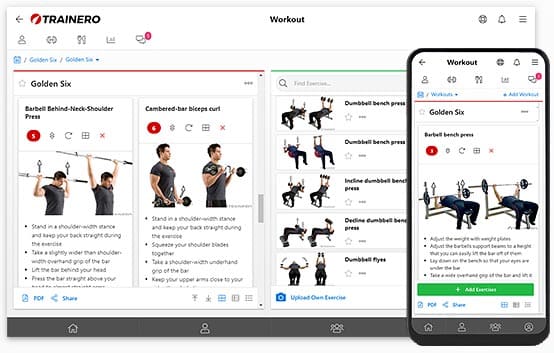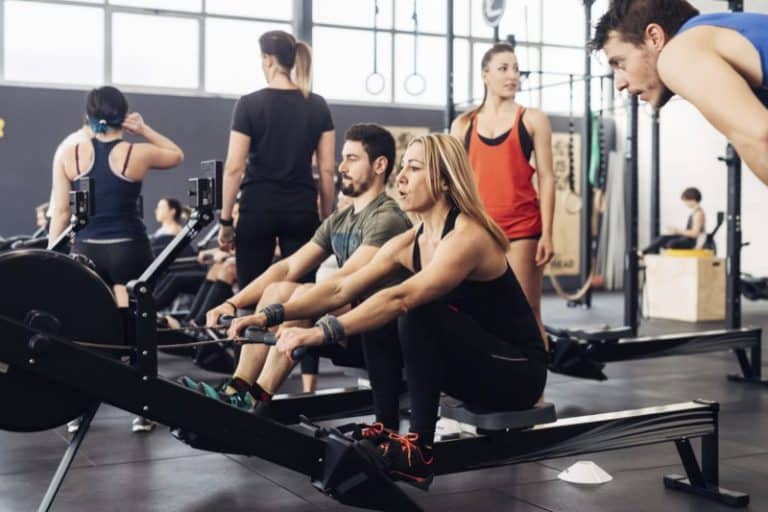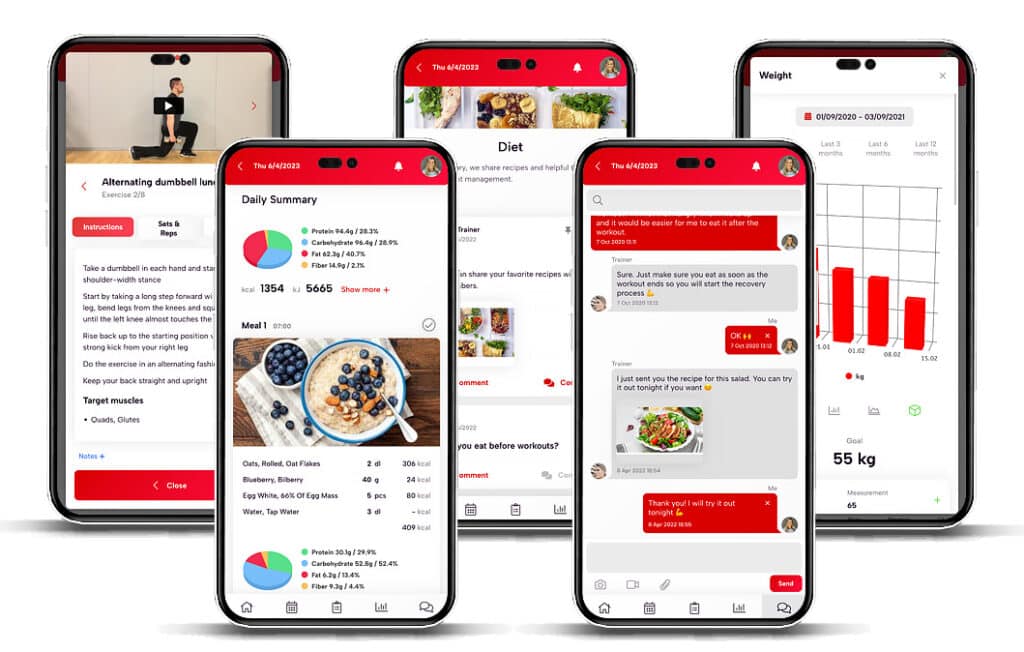You can fit fitness into even the busiest schedule. Treat workouts like appointments, scheduling them around your peak energy. Prioritize high-intensity interval training (HIIT) or bodyweight circuits for maximum results in minimal time.
Consistency is key – start small, gradually increasing intensity. The path to a better fitness routine begins with effective planning and commitment.
Planning Your Workouts: Stop Wishing, Start Sweating
We know — you’re busy. We get it. We all are. But that’s precisely why meticulously planning your workouts isn’t a luxury—it’s a necessity.
Think of it like this: you wouldn’t skip a crucial business meeting, would you? Your fitness goals deserve the same level of respect and scheduling priority.
Treat your workout appointments like any other important meeting. Block them out on your calendar, set reminders (yes, multiple ones!), and treat that time as non-negotiable.
This isn’t about finding some time; it’s about strategically making time.
Consider your peak energy levels. Are you a morning person or a night owl? Scheduling your workout around your natural energy rhythms dramatically increases compliance.
Micro-Workouts: Maximizing Minutes
A full hour at the gym isn’t always feasible. But that doesn’t mean you’re off the hook. We’re talking micro-workouts here – short, intense bursts of activity strategically placed throughout your day.
- Example: 10 minutes of jumping jacks during your lunch break, a 15-minute brisk walk after dinner, or even a quick set of squats and push-ups before your next meeting.
This approach is incredibly effective for several reasons: it keeps your body moving consistently, combating the negative effects of prolonged sitting, and adds up to significant fitness gains over time. It’s about consistency over intensity sometimes.
Preparation is Key: The Night Before Wins
Forget perfectionism; it’s all about removing obstacles. The night before every workout, lay out your clothes, shoes, and any equipment you need. Having everything ready reduces decision fatigue in the morning, leaving you less likely to skip the workout due to simple logistical issues.
- Pro-tip: Pack your gym bag the night before. This even includes your water bottle, protein bar, or headphones. Remove any potential roadblocks before they even have a chance to appear. Eliminates excuses.
Think of it as pre-gaming your fitness; you’re setting yourself up for success before you even start. It’s such a simple and easy act that helps propel you towards hitting your goals.
Technology as Your Ally: Reminders and Alerts
Harness the power of technology. Use calendar alerts, reminder apps (even simple phone alarms will work), and fitness trackers to keep you accountable. Set multiple reminders – one the night before, one in the morning, and even one 15 minutes before your scheduled workout.
- Experiment: Try different reminder systems to find what works best for your schedule and personal preferences. Don’t be afraid to utilize several methods across multiple platforms to amplify accountability.
The goal is to create a constant, gentle nudge that keeps your fitness goals front and center, reminding you of your commitment.
Aligning Workouts with Your Schedule
Don’t try to force a square peg into a round hole. Your workout plan needs to be adaptable and flexible, woven seamlessly into your existing routine. This is about building a sustainable habit, not creating a torturous regime.
- Example: If your busiest days are Mondays and Wednesdays, schedule shorter, less intense workouts on those days. Maybe it’s a quick 20-minute bodyweight circuit instead of an hour at the gym. Then you can allocate longer sessions on less busy days.
This approach involves mindful scheduling, adjusting your workout intensity and duration to match the demands of your day. Prioritize realistic scheduling above all else. This is practical advice, not some aspirational fitness fantasy.
Short, Frequent Workouts: Maximize Your Minutes
Finding time for a full workout might feel impossible.
But we’re here to tell you that squeezing in fitness doesn’t require hours at the gym.
The secret? Short, frequent workouts. This isn’t some fitness fad; it’s a scientifically proven strategy for maximizing your results, even with a packed schedule.
Thirty minutes of daily activity is the recommended goal, and breaking that into 10-15 minute segments makes it perfectly manageable.
Think about it: that’s two or three short bursts throughout the day—easily integrated into your routine.
Sneaking in Exercise Throughout Your Day
Don’t underestimate the power of accumulating small wins. Those seemingly insignificant actions add up remarkably:
- Take the stairs. Ditch the elevator. It’s a mini-cardio blast.
- Park farther away. Those extra steps contribute significantly over time.
- Walk during your lunch break. Even a brisk 10-minute walk significantly boosts your activity levels.
- Walk and talk on the phone. Multitasking at its finest—and healthiest!
High-Intensity Interval Training (HIIT): Maximum Impact, Minimum Time
Even just 10 minutes of HIIT can deliver a phenomenal workout. The key is maximum effort during short bursts followed by brief recovery periods.
Try these:
- Push-ups: Classic and effective, targeting chest, shoulders, and triceps. Aim for as many reps as you can with perfect form.
- Air squats: Works your quads, glutes, and hamstrings—no equipment needed. Focus on proper form to avoid injury.
- Burpees: A full-body exercise combining squats, push-ups, and jumps. A true calorie blaster.
- Mountain climbers: Engages your core and improves cardiovascular fitness.
Remember, the intensity is crucial. Push yourself to your limit during those short work intervals.
Yoga for Strength, Flexibility, and Stress Relief
A 20-minute vinyasa yoga flow offers a fantastic blend of moderate-intensity cardio, muscle strengthening, and stress reduction.
It’s a perfect blend of movement and mindfulness, leaving you feeling energized and centered. Consider starting your day with it or using it as an active recovery session after a more intense workout.
Micro-Workouts: Maximize Your Breaks
Don’t let those ten-minute breaks at work go to waste. Turn them into mini-fitness sessions:
- Push-ups against the wall. A suitable modification that still engages your chest and triceps.
- Jumping jacks. A simple yet effective cardiovascular exercise.
- Desk stretches. Simple stretches to combat stiffness and improve posture.
You can even incorporate these short bursts of activity while waiting for appointments or during television commercial breaks.
Maximize Daily Movement
A packed schedule isn’t an excuse for neglecting your health. Small changes, strategically implemented, can dramatically impact your daily activity levels.
And we’re going to show you exactly how. We’re talking about adding hundreds, even thousands of extra steps and burned calories without adding hours to your already overflowing day.
Forget the elevator. Seriously. Consider the impact: each stair you climb burns approximately 0.17 calories.
Climb ten flights? That’s almost 17 calories right there, and it adds up fast. Think about how many flights you could realistically take each day. It’s a calorie-torching opportunity staring you in the face; don’t ignore it.
- Prioritize stairs over elevators whenever possible.
- Track your stair climbing – you’ll be amazed at the cumulative effect.
Parking further away is your next secret weapon. Aim for a spot that adds at least a 5-minute walk to your routine. This isn’t some arbitrary suggestion; hundreds of extra steps are easily achievable, boosting your daily activity level significantly.
Think about it: a 5-minute walk at a moderate pace adds up to several hundred steps, and you’re doing it already. You’re already walking to your car anyway – why not just add a little on top?
- Strategically park further away to add hundreds of steps to your routine.
- Time yourself for objective measurement. Observe this simple hack and measure your incremental progress.
Short bursts of exercise are your hidden fitness ally. Ten push-ups during a break? That’s more than you think.
This isn’t just about the calories burned, which are definitely significant, but also about jump-starting your energy levels.
Feeling sluggish? A mini-workout can break the cycle and leave you feeling refreshed and ready to tackle the remainder of your workday. Fit them in between calls, meetings, or when you find yourself stuck in transit.
- Incorporate 10-15 repetitions of simple exercises such as push-ups, squats, or jumping jacks throughout your day.
- Use a timer to track intervals.
Finally, ditch the mindless scrolling. That extra time spent on social media? Trade it for a brisk walk. It’s not just more activity; you’ll experience improved physical health AND a massive mood lift. These short breaks are highly effective—they’re not just about the exercise, but a powerful mental health boost as well.
Walk while you take your calls— you probably noticed you have a certain amount of time on routine calls that you could turn into productive movement.
- Replace mindless scrolling with an equivalent amount of time spent engaged in physical activity, such as walking.
- Keep a schedule of such activities to remain accountable.
Small movements matter immensely. Accumulated throughout the day, these seemingly inconsequential actions can lead to substantial improvements in your overall physical activity.
Think walking while on phone calls, taking the longer route to the restroom, or pacing while brainstorming. These seemingly insignificant actions, when consistently applied, lead to profound results in your daily calorie burn and physical exertion—it’s about consistency and the cumulative effect.
- Actively seek opportunities to incorporate small bursts of movement into your daily routine, such as pacing while on the phone.
- Use a step counter to track your progress and stay motivated. This is critical for achieving your goals, staying on track and establishing healthy habits.
Effective Workout Types: Maximize Your Time, Maximize Your Results
The key is choosing workout styles that deliver maximum impact in minimal time. We’re talking efficient, results-driven training that fits seamlessly into even the most packed schedule.
High-Intensity Interval Training (HIIT): Your Time-Crunch Solution
HIIT is your secret weapon. These workouts maximize calorie burn and fitness gains within incredibly short timeframes—think 10 to 30 minutes.
Forget hour-long treadmill sessions; HIIT delivers superior results in a fraction of the time. The science is clear: short bursts of intense exercise followed by brief recovery periods trigger significant metabolic improvements.
- Tabata Training: A prime example of HIIT is Tabata. This protocol involves just 20 seconds of all-out effort followed by 10 seconds of rest, repeated eight times for a total of four minutes. Four minutes. That’s it. Choose any exercise—burpees, mountain climbers, jumping jacks—and commit to those 20-second intervals. You’ll be amazed at the results.
Bodyweight Training: Equipment-Free Power
Don’t let a lack of gym access hold you back. Bodyweight training leverages your own body weight for resistance, building serious strength and requiring zero equipment. This means you can train anywhere—at home, in a hotel room, even outdoors.
- Essential Exercises: Focus on fundamental movements like push-ups, squats, lunges, planks, and burpees. These exercises effectively target multiple muscle groups simultaneously, maximizing your workout efficiency. Progressive overload is key—gradually increase the number of repetitions or sets as you get stronger.
Circuit Training: Strength and Cardio Fusion
Combine the power of strength training with the cardio benefits of circuit training for a truly efficient workout. Circuit training involves a series of exercises performed back-to-back with minimal rest between sets. This approach keeps your heart rate elevated, maximizing calorie burn while simultaneously building muscle and improving endurance.
- Example Circuit: A sample circuit might include 30 seconds of squats, followed by 30 seconds of push-ups, 30 seconds of jumping jacks, then 30 seconds of planks, repeated three times. Adjust the exercises and rest periods to suit your fitness level.
Yoga and Pilates: Mindful Movement for Strength and Flexibility
While not as intense as HIIT or circuit training, yoga and Pilates deserve a prominent place in your fitness arsenal. Practicing these mindful movement forms significantly improves flexibility, core strength, and stress reduction. The added benefits of reduced stress and improved mental well-being shouldn’t be underestimated.
- Time Commitment: Aim for 20-40 minute sessions, integrating them into your schedule for a balanced approach to fitness. Even a few sessions per week can have a noticeable impact on your physical and mental state. This is preventative wellness at its finest.
Prioritizing Your Well-being: It’s Not Optional
Before you even think about push-ups or planks, book a checkup.
Seriously. Consulting a physician before starting any new program is non-negotiable. They can identify potential issues—like underlying heart conditions or joint problems—that could be exacerbated by exercise.
Think of this as preventative maintenance for your most valuable asset: you. This isn’t bureaucratic red tape; it’s intelligent risk management. Don’t skip it.
Finding Your Fitness Sweet Spot: Enjoyment is Key
Your workout plan needs to be something you actually like. Dreading every session sets you up for failure. Find activities that genuinely engage you.
Do you love dancing? Zumba classes await. Passionate about hiking? Explore local trails. Maybe you find solace in swimming laps or the adrenaline rush of spin class.
The key is enjoyment, because sustainable fitness hinges on consistent action. Don’t force yourself into a grueling routine you’ll abandon in a week.
- Instead of forcing yourself to run, try a brisk walk interspersed with jogging intervals.
- Don’t immediately sign up for a marathon; start with a 5k.
- Swap rigorous weight lifting for bodyweight exercises.
Starting Smart: Small Steps, Big Results
Avoid the all-or-nothing approach. Begin with shorter, less intense workouts—think 15-20 minutes, three times a week. This builds a solid foundation without overwhelming your body or risking injury. Gradual progression is your friend here, focusing on consistency over intensity.
- Start with 10 minutes of yoga and gradually add 5 minutes every other session until you reach your goal of 30 minutes.
- Begin with short walks and slowly add distance or increase walking speed once your body adapts.
- Focus on proper form over the amount of weight lifted.
Setting Realistic Goals: Celebrating Small Wins
Unrealistic expectations are motivational kryptonite. Setting achievable targets—whether it’s walking for 30 minutes three times a week or incorporating one extra serving of vegetables daily—keeps you engaged and prevents burnout. Celebrate these small victories; they fuel momentum.
- Instead of aiming for a drastic weight loss in a short amount of time, set a realistic goal of 1-2 pounds per week.
- Don’t try to overhaul your diet overnight. Make gradual changes and track your progress over several weeks.
- Set SMART goals: Specific, measurable, achievable, relevant, and time-bound.
Gradual Change: The Pace of Progress
Avoid radical transformations. Your body and mind need time to adapt. Introduce changes gradually. Instead of drastically slashing calories or jumping into a high-intensity interval training (HIIT) program, make minor adjustments weekly. This slow, steady approach builds resilience and ensures long-term success.
- Reduce your daily sugar intake by one sugary drink a day.
- Introduce one new healthy recipe into your meals every week
- Increase your activity levels by taking the stairs instead of the elevator.
Workout Resources
Let’s talk resources. You’re short on time, right? We all are. So, finding workouts that fit your schedule—and actually work—is crucial. Forget vague promises; let’s get strategic.
Fitness Apps: Your Personalized Pocket Gym
Fitness apps aren’t just pretty interfaces; they’re powerful tools. They offer structured workout routines tailored to your fitness level, from beginner to advanced. Think of them as having a personal trainer in your pocket, constantly monitoring your progress and pushing you further.
Many apps provide:
- Guided workouts with voice instructions, eliminating guesswork.
- Progress tracking to visualize your achievements and stay motivated.
- Workout variety, ensuring you don’t get bored and plateau. Professional platforms like Trainero and consumer apps like Peloton, BetterMe, and Nike Training Club all offer diverse programming.
YouTube: Your Free, On-Demand Fitness Studio
YouTube. It’s not just cat videos, folks. It’s a treasure trove of free exercise tutorials. Find everything from invigorating HIIT sessions to calming yoga flows and precise Pilates routines. Channel variety is immense – you’ve got flexibility unmatched by any gym membership.
- Look for qualified instructors with certified training. Read comments to gauge others’ experiences.
- Explore diverse styles to find what you enjoy. Don’t stick to one type of workout. Variety keeps things interesting and challenges different muscle groups.
- Create personalized playlists based on your goals and time constraints. 20-minute sessions before work? Easy.
Short, Effective Workouts: Maximize Your Minutes
Time is your most precious resource. Let’s leverage it. Forget the myth that you need hours at the gym. Numerous resources showcase the efficacy of short, intense workouts:
- 10-Minute HIIT: These are killer for calorie burn and boosting your metabolism. Find routines on YouTube, fitness blogs, or within dedicated apps.
- 20-Minute Yoga Flows: Perfect for flexibility, stress relief, and a gentle yet effective workout.
- Bodyweight Circuits: No equipment needed! These routines build strength and endurance using your own body weight. Look for examples online, tailored to what your body can currently handle.
Remember: short bursts of high-intensity activity can be just as effective, if not more so, than longer, lower-intensity workouts—especially if you’re short on time.
Gear Up Wisely: Research Before You Buy
Don’t waste money on gear that doesn’t fit your needs or workout style. Websites and fitness magazines provide detailed reviews and comparisons of everything from Asics running shoes to resistance bands.
Read reviews, compare prices, and focus on quality and durability over fleeting trends. Investing wisely ensures your equipment lasts and provides value long-term.
- Read multiple reviews from different sources. Pay attention to things like comfort, durability, and price-to-value.
- Consider your workout style: If you’re running, you need different shoes than if you’re practicing yoga.
Planning Your Success: Structure is Everything
This isn’t just about workouts; it’s about building sustainable habits. You need a plan. Books and articles on workout planning offer invaluable strategies for weaving exercise into your busy life—things like scheduling workouts like any other appointment or finding workout buddies for accountability.
- Schedule workouts as non-negotiable appointments in your calendar.
- Find an accountability partner to help you stick to your plan. Be visible with your goals.
- Track your progress to measure your success and celebrate those milestones. This keeps you motivated and creates positive momentum.
Staying Consistent: It’s Not About Willpower, It’s About Strategy
Willpower alone is a flimsy foundation for a consistent workout routine.
It fades. It’s fickle. It’s unreliable.
That’s why successful people don’t rely on it. They strategize. And that’s exactly what we’re going to do. We’re going to game the system, so to speak, to make sticking to your fitness plan almost effortless.
Data shows scheduling your workouts like critical appointments—think doctor’s visits or important business meetings—boosts adherence by a whopping 30-40%.
Don’t just think about exercising; book it. Treat it as a non-negotiable. This isn’t optional. This is part of your daily success plan.
- Block out specific times in your calendar. Don’t be vague. “Workout sometime” won’t cut it. Aim for “7:00 AM – 7:30 AM, Spin Class at CycleBar.”
- Set reminders on your phone and even a physical calendar. Seeing it visually reinforces the commitment.
The next key element is leveraging reminders. Studies show that using calendar alerts or app notifications improves consistency by a significant 15-20%.
Think of them as your personal fitness accountability partners. Set multiple reminders if needed. One the night before, one an hour before, and even one five minutes before. These small nudges are powerful.
- Choose notification methods that work best for you—vibrating alerts, loud notifications, or even a combination. Experiment until you find your optimal cadence.
- Use different apps to enhance your notification strategy: your fitness app, your calendar, even a dedicated reminder app.
Minimize Decision Fatigue: Before you even contemplate skipping a workout, eliminate as many barriers as possible. Preparing your workout gear the night before—clothes, shoes, water bottle—reduces decision fatigue and increases your likelihood of exercising by 10-15%. You’re removing the mental friction that often leads to procrastination.
- Lay out your outfit, pack your bag, and even prepare a quick pre-workout snack the evening before to make the morning as seamless as possible. This removes objections as soon as they appear.
- If you prefer to work out after work, prepare your bag the same way in your lunch break.
Tackle the “Too Much, Too Soon” Trap: Breaking down workouts into shorter, more manageable 10-15 minute intervals reduces the feeling of being overwhelmed.
It makes exercise less daunting and significantly increases your completion rates. Think of it as building momentum rather than launching a marathon on day one.
- Instead of aiming for a full hour, start with three 15-minute sessions during the week. You may find it far easier to commit to shorter blocks of time that eventually add up to more than you might imagine.
- Don’t underestimate the power of micro-workouts. Even 10 minutes of intense activity is better than nothing.
Celebrate Small Wins, Track Your Progress: Tracking your progress, even the small wins—think completing a single workout session or sticking to your plan for a week—makes a huge difference. It reinforces your efforts and maintains motivation. When you see how far you’ve come, you’ll be more likely to keep going.
- Use a fitness tracker, app, or even a simple journal to record your workouts. The act of recording is empowering in itself.
- Visualize your progress. Graphs and charts make this easier and show you aren’t just flailing around. This simple step will dramatically change your perception of your efforts.
Consistency isn’t about magical willpower. It’s about strategic planning. Implement these strategies, and watch your adherence skyrocket. You’ve got this.
Questions and Answers
How to Workout When You Have a Busy Schedule?
You’ll need time management strategies. Prioritize workouts; use efficient exercises and short bursts. Explore home workout options, bodyweight training, and mindful movement. Track results and stay accountable. Schedule flexibly.
What Is the 3-3-3 Rule Gym?
You’ll find no standard “3-3-3 rule gym.” Rule variations exist for various workout plans. Consider your time commitment, muscle groups targeted, frequency, intensity, proper form, rest, progression, and safety. Results depend on consistency.
What Is the Best Workout Routine for Busy People?
Prioritize time management. Choose efficient workouts; quick exercises, bodyweight training, and HIIT workouts work. Incorporate short bursts of activity. Maintain workout variety, track results, and don’t forget proper warm-up and cool-down stretches.
What Is the 2 2 2 Rule in Gym?
You’ll perform two exercises, two sets, and two reps each. Its benefits include time efficiency, but drawbacks exist; it’s insufficient for muscle growth. Adjust intensity and recovery as needed; results vary.
Final Thoughts
You’ve learned strategies for incorporating fitness into a busy life. Remember, short, intense workouts are as effective as longer ones.
Prioritize daily movement; even small additions matter. Choose workout types you enjoy to boost adherence. Consistency is key; don’t strive for perfection, but for progress. Leverage online resources for support and guidance. Now, put your plan into action.
Ready to Transform Your Busy Schedule into a Fitness Success Story?
Take the next step in your fitness journey with Trainero. Whether you’re working with a personal trainer or managing your own fitness routine, Trainero’s comprehensive platform helps you plan workouts, track progress, and stay accountable—all while fitting seamlessly into your busy lifestyle. Start maximizing your workout efficiency today and turn those time constraints into fitness victories.

Unlock your fitness potential with Trainero! Get a 14-day free trial and access personalized workout plans, expert coaching, and progress tracking—all in one app. No commitments, just results. Start your free trial today and take your fitness journey to the next level!











